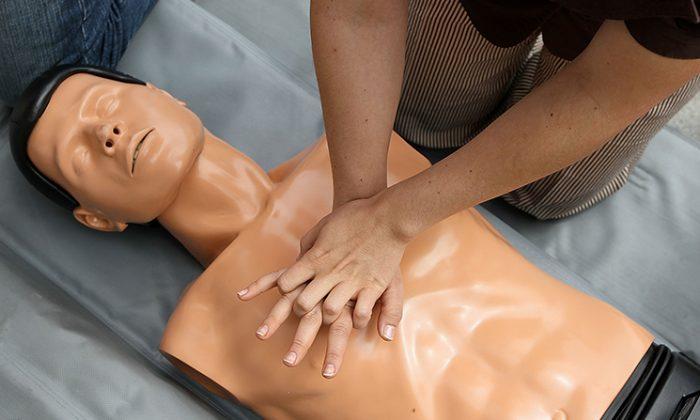Is there life after death?
When the body dies, does the brain die?
Is that it?
For years people have described near-death experiences where their bodies were pronounced dead, but their consciousnesses seemed to go right on living.
People have reported hearing operating-room conversations, which happened after they were declared dead—conversations later confirmed by the participants.
Others have reported rising above their bodies and seeing the medical team frantically at work trying to revive them.
All the while the electronic devices monitoring life were silent, the notorious flatline. No brain activity.
If these stories were rare, some of the details were uncorroborated, they would all be dismissed. However, they are too frequent and too factual to be ignored.
Dr. Sam Parnia and his team from New York University Langone School of Medicine wanted to understand life and death.
Parnia wanted to know when life really ends. Does life end when the brain dies? Does the brain die when the body dies?
Parnia and his team decided to review all the research from the United States and Europe about patients who went into cardiac arrest and recovered.
The studies showed that at least some of the stories were accurate.
Patients in full cardiac arrest—where the heart has stopped beating, and the brain has stopped receiving blood—lose brain function in 2 to 20 seconds, Parnia explained.
In a medical sense, the body is dead when the heart stops beating and the brain stops getting fresh blood. The brain, which motivates the entire body via its bioelectric signals, stops transmitting. The body’s power source shuts down, so the rest of the body follows suit.
Within 20 seconds of the heart stopping, the brain flatlines; it stops producing brainwaves. Its activity, according to medicine’s most sophisticated sensors, ceases.
Yet in case after case doctors verified that the descriptions of revived patients matched what actually happened in the room after the patients had supposedly “died.”
“They’ll describe watching doctors and nurses working and they’ll describe having awareness of full conversations, of visual things that were going on, that would otherwise not be known to them,” Parnia said in an interview.
This is serious business.
Parnia leads the Resuscitation Research Group at Stony Brook University Hospital in Stony Brook, N.Y.
Their mission is “to improve the survival and functional outcome of people suffering cardiac arrest.” By learning how the body reacts to even a temporary death, the group hopes to learn how to save more cardiac arrest patients and to limit how much damage dying does before life can be restored.
Their research shows that “death” can be different for different patients.
Doctors in a Canadian intensive care unit found that a patient on life support machinery registered the brain waves of a sleeping person 10 minutes after the machine was turned off. The person’s body had been long dead. There should have been nothing going on in the brain—yet the electroencephalogram (EEG) registered the brain waves of a person in normal sleep.
Three other patients, also taken off life support, did not show these brain waves—but each showed different EEG graphs. Apparently each brain had its own way of dying.
While Parnia’s research is geared toward helping the living, it does raise questions about the nature of life and death.
It seems impossible to deny that in some cases, some kind of consciousness persists after the physical “death” of the body, and the apparent “death” of the brain. The brain shows no sign of conscious function—yet the consciousness continues to function.
The nature of life has been a subject most scientists don’t research. There are not many ways to conduct scientific experiments on dying—obviously medical ethics and human decency prevent killing people and then trying to revive them. And scientists cannot be on hand whenever someone has a near-death experience—they are impossible to predict.
The nature of life, the nature of consciousness is extremely difficult to study. That doesn’t mean it is not worth studying.
Research like Parnia’s proves that there is important information there, even if it is still just out of reach.






Friends Read Free